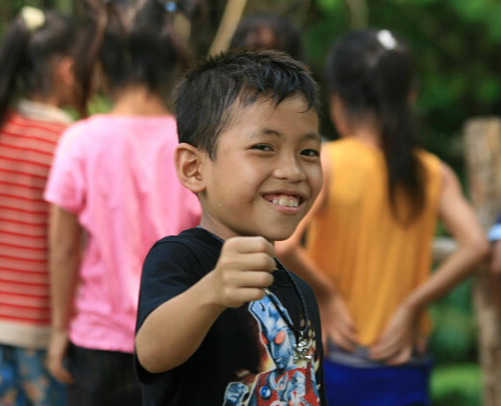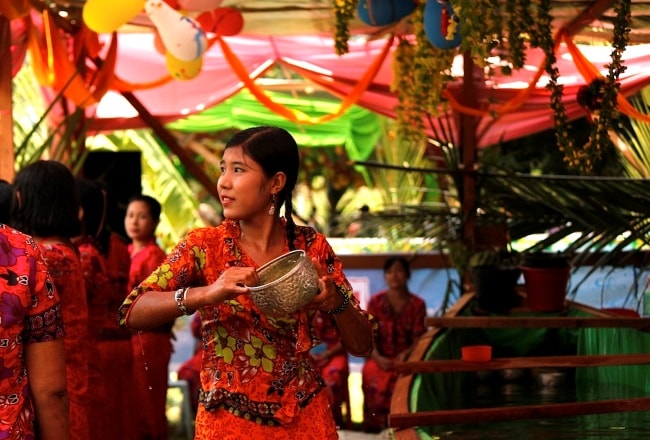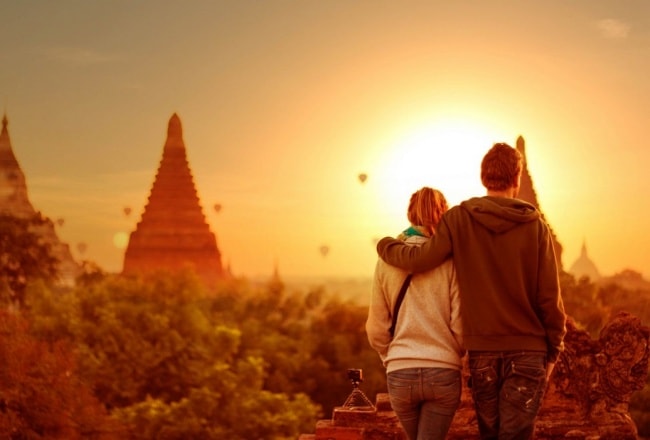Culture Overview
Myanmar is a sovereign state located in the Southeast Asian region. Myanmar is bordered by India and Bangladesh to its west, Thailand and Laos to its east and China to its north and northeast. Its capital city is Naypyidaw, and its largest city and former capital is Yangon (Rangoon). Myanmar has been a member of the Association of Southeast Asian Nations (ASEAN) since 1997.
Early civilisations in Myanmar included the Tibeto-Burman-speaking Pyu city-states in Upper Burma and the Mon kingdoms in Lower Burma. In the 9th century, the Bamar people entered the upper Irrawaddy valley and, following the establishment of the Pagan Kingdom in the 1050s, the Burmese language, culture and Theravada Buddhism slowly became dominant in the country.
The Pagan Kingdom fell due to the Mongol invasions and several warring states emerged. In the 16th century, reunified by the Taungoo Dynasty, the country was for a brief period the largest empire in the history of Mainland Southeast Asia. The early 19th century Konbaung Dynasty ruled over an area that included modern Myanmar and briefly controlled Manipur and Assam as well.
The British took over the administration of Myanmar after three Anglo-Burmese Wars in the 19th century and the country became a British colony. Myanmar was granted independence in 1948, as a democratic nation. Following a coup d'état in 1962, it became a military dictatorship.
Myanmar's recent political history is underlined by its struggle to establish democratic structures amidst conflicting factions. This political transition from a closely held military rule to a free democratic system is widely believed to be determining the future of Myanmar.
The resounding victory of Aung San Suu Kyi's National League for Democracy in 2015 general elections has raised hope for a successful culmination of this transition.
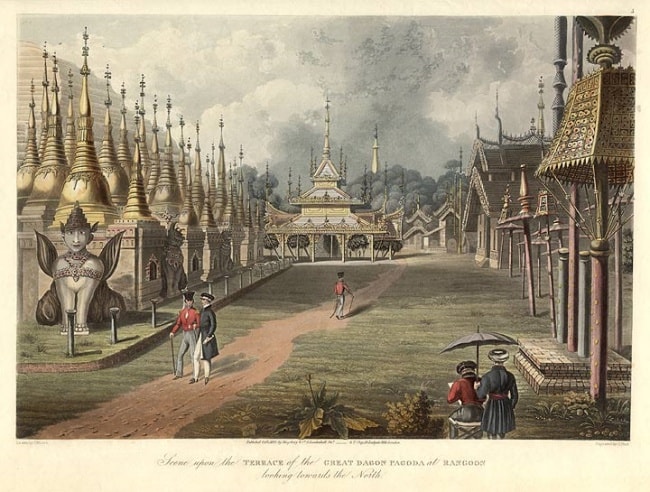
Local Customs
Travelling in Myanmar is a wonderful experience and you will soon realise that the Burmese are very friendly, outgoing people and very hospitable towards visitors.
Greetings: The traditional word of greeting is ‘mingalaba’ (hello). You use ‘Nay kaung la’ to ask ‘how are you?’ or ‘how do you do’. The greeting consisting of the palms pressed together in a prayer-like way, while common in Thailand, India, Laos and Cambodia, is generally not used in Myanmar.
The longyi is everywhere. The longyi is a sari-like tube of cloth that is widely worn by men and women in Myanmar. I bought one at the Boyoke Market in Yangon and loved it. It was very convenient to just wrap around myself for entering temples and when wearing it on the streets I had an easier time interacting and befriending locals. They were really happy to see me wearing their traditional piece of clothing.
Here is more detail about Burmese Longyi
Thanaka: You will notice a lot of locals walking around with a yellowish-white paste applied to their faces. Thanaka cream has been used by the Burmese for over 2000 years and is not only used for cosmetic reasons, but also for cooling and as a protection from sunburn.
Here is more detail about Myanmar Thanaka
Teatime: Tea is very important in the Myanmar culture. It is a popular drink everywhere and usually when arriving at someone’s home you will be offered tea immediately. Some Burmese still observe teatime, a tradition that came from the British colonial period.
Politics are taboo and something that is not spoken about openly in public. Avoid asking locals questions about it.
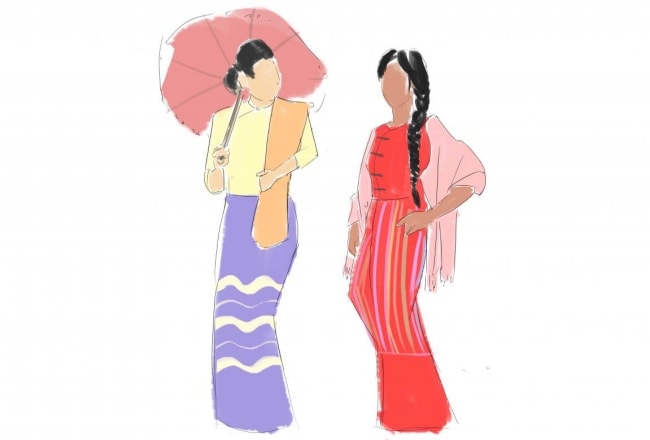
Right vs Left
Eating and passing things to others are reserved for the right hand. It’s considered rude to eat or pass things using the left hand because the left hand is used for personal hygiene; that is, for using toilet paper. When giving or receiving a gift, it is appropriate to use both hands.
When you visit temples and pagodas, you will notice people walking multiple times around stupas. This is called ‘circumambulation’. Circumambulation is always done clockwise, to ensure that one’s right side is closer to the center.
This is a sign of respect, a reminder to keep the Buddha’s teaching at the center of one’s life. Here you can see the same idea that the right side is superior to the left.
Regarding left and right, an interesting fact on the roads of Myanmar is that people drive on the right-hand side of the road, with mostly right-hand-drive vehicles (while the steering is also on the right).
This is different from the rest of the world, where you either drive on the right using left-hand-drive (LHD) vehicles or drive on the left using right-hand-drive (RHD) vehicles.
The story goes that as subjects of the British, the Burmese followed the British custom of driving on the left using RHD vehicles. Then in 1970, following the advice of an astrologer, the military leader at the time – Ne Win – decided it would be better to drive on the right than on the left.
Since all of the vehicles had steering wheels on the right, they continued to use RHD vehicles while driving on the right-hand side.
Now both RHD and LHD vehicles can be found on Myanmar’s roads. For safety reasons, the government has recently introduced import laws banning the import of RHD vehicles, with the hope of eventually replacing all by LHD vehicles
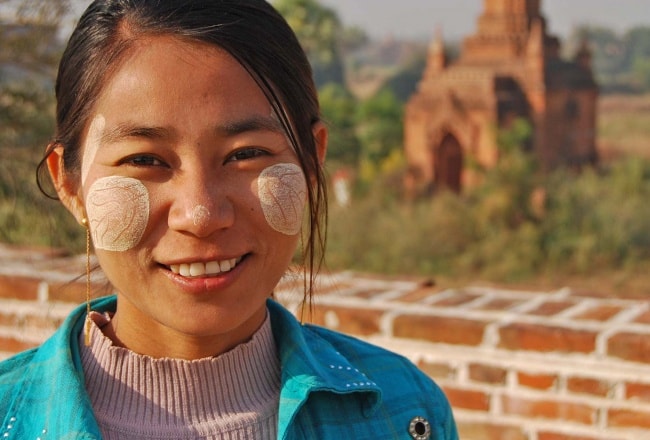
Head vs Feet
Myanmar people have strong views relating to the upper and lower parts of the body. The upper part is considered superior, while the lower is inferior. The head is regarded as the holiest part, while the feet are considered the most impure part of the body.
Hence, Myanmar people will not use the same item for their upper and lower body parts. For example, they do not use the same towel to dry their head and feet or use the same basin to wash their feet and face. Washing one’s feet with water reserved for drinking is considered insulting.
As the head is considered a sacred part of the body, it is best to avoid touching anyone’s head, even the heads of little children, as doing so is seen as very disrespectful.
Similarly, it is seen as very disrespectful to touch or even point at anything with your feet. The habit of putting one’s feet on the table is perceived as outrageous. So please do refrain from relaxing like that, and be careful what you do with your feet! (Playing football is okay.)
One of the first Christian missionaries in Myanmar, Adoniram Judson, arrived in Myanmar in 1813, a little more than 200 years ago. Soon after he arrived, he was warned by his predecessor about unknowingly offending Myanmar people with body language, because a minor blunder could be fatal.
Myanmar has changed a lot since then and has become much more forgiving with these social rules, but people still have strong feelings regarding these different parts of the body, which you ought to keep in mind.
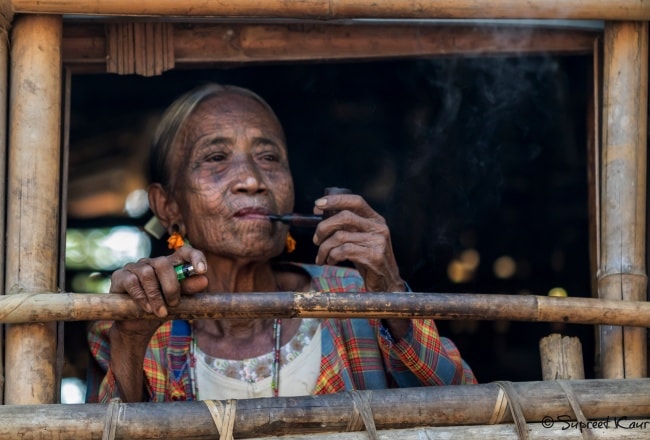
Women
Women have unique status in Myanmar society as it was once a matriarchal society. They can own land and property, do not change their name after marriage, and in the event of divorce are entitled to half the property accumulated during the marriage.
Myanmar women are known to be strong and competent. Running a business, for example, comes naturally to them. The sight of women carrying things on their heads is common, showing their hardiness.
However, despite same legal standing, women are typically segregated from men. In social interactions, men interact amongst themselves, while women constitute another cluster. At mealtimes, men are served first.
When a man walks down the street, often his wife follows a few steps behind, carrying his things.
Women are not to be touched. If a woman wants to shake hands with a man, she will offer her hand first. Women refrain from going to certain areas in a temple and some Buddhists consider that divine enlightenment can only be obtained by men.
From these examples, you can see the paradox of women in Myanmar. On one hand they enjoy the same legal standing, and have strong independent character, while on the other they are segregated and have definite social expectations regarding their behavior.
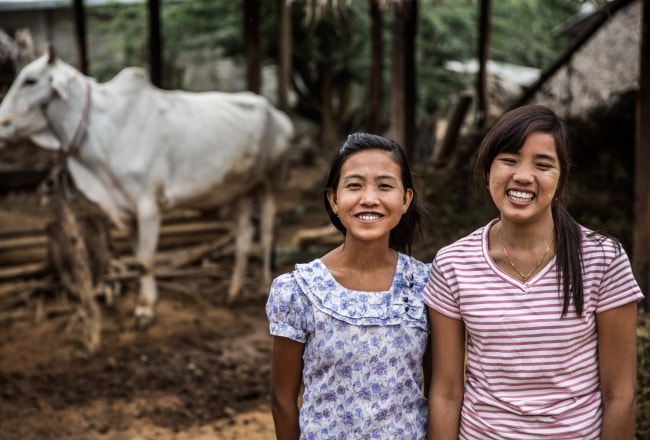
Greeting and Conversing
In Myanmar, handshakes are not the norm for greeting, but instead a slight bow. Myanmar people use honorifics when addressing others, especially if they are older. Older men are addressed with ‘U’ before their name, and older women with ‘Daw’.
Though Myanmar is opening up, there are still several issues which are too sensitive to discuss, especially religious- or ethnic-based conflicts. Some people do like to talk about their leader Aung San Suu Kyi, but many other political topics remain sensitive and are best avoided.
Religious Sensitivity
The people of Myanmar are particularly sensitive when it comes to religion. There is a law prescribing four years of imprisonment for ‘insulting religion’ and ‘hurting religious feelings’.
Over the past few years there have been several cases of expatriates being unexpectedly detained for acts deemed as insults to local religion.
In the same year, a Canadian university professor was asked to leave the country for having a tattoo of Buddha on his leg. Two years later, a Spanish tourist was also asked to leave for having a tattoo of Buddha on his calf.
These two cases were because people in Myanmar see the lower part of the body as ‘unclean’, so having the sacred image of Buddha tattooed on the leg is considered almost blasphemous. What seems innocent and even cool to expatriates can seem offensive and disrespectful to locals.
Even taking photographs of images of Buddha is considered by some to be sacrilegious but is generally tolerated in foreigners.
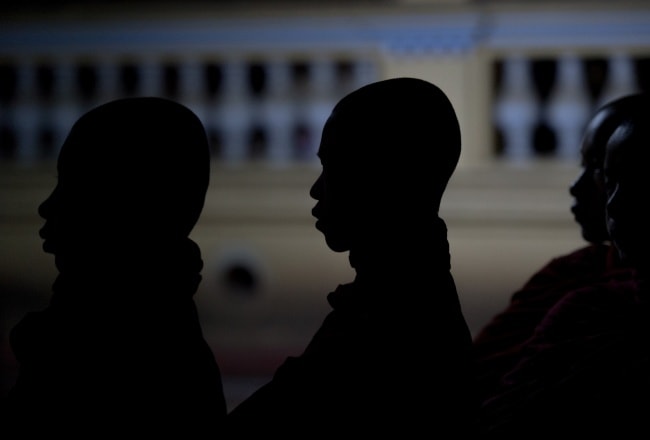
Temples and Monks
At religious sites, legs and shoulders should always be covered, so no short sleeve shirts, short pants, or short skirts. Although sometimes these are tolerated when worn by foreigners, they are not considered appropriate.
Socks and shoes should be taken off before entering any temple site, even if the site is huge.
Monks are held in reverence. They are not to be touched and get to sit at the best place available – which on a bus is the roof! Taking photos of monks, especially when they are meditating, is considered rude.
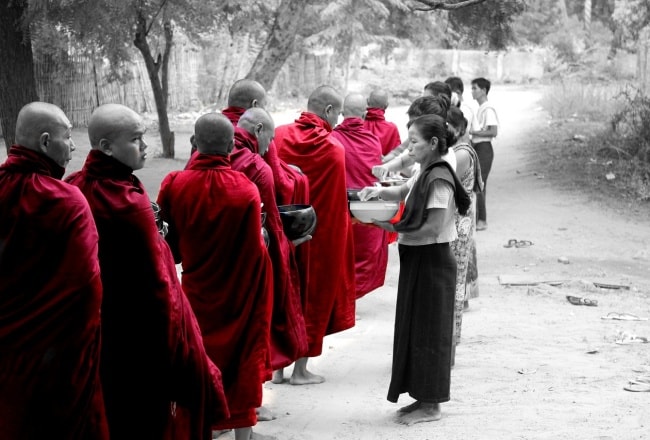
Dressing in Myanmar
Myanmar can get very warm and humid. If you’re not familiar with tropical climes, you will be tempted to dress as light as you can. However, when you pack for your holiday, it’s best to keep a few pointers about respectful dressing in mind.
Myanmar has just opened up its borders, and the local populace is still defined by its old and cherished customs and traditions. While they may not express it, strappy tops and mini shorts are a severe contrast to the traditional long skirts, kilts and vests of the Burmese. If you’ve been to Bali, you’ll know that wrapping a sarong is a must before entering temples.
The same thing applies here! If your day consists of visiting pagodas, you should consider wearing a longyi or htamein over a pair of shorts. Usually made of cotton or a cotton mix, these are light and airy! Alternatively, a usual long wrap-around skirt covering the knees would work just fine!
Sleeve-less tops can easily be switched out for short-sleeved, breathable tees – covering your shoulders up is seen as respectful too, especially in religious places. You could afford to be a little lax when you’re exclusively exploring Myanmar’s outdoors, like the Inle Lake or when you’re hopping around Mandalay.
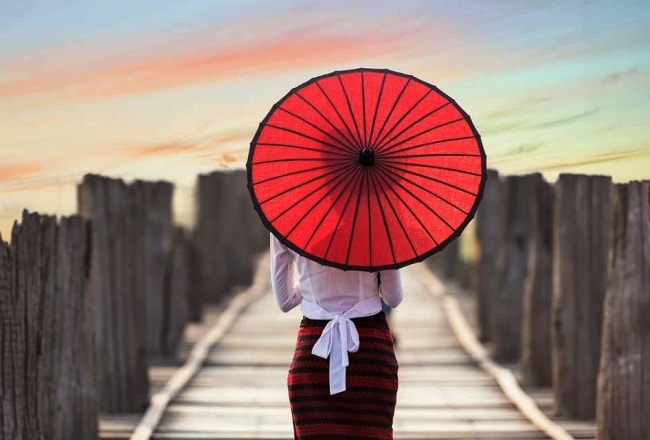
Respect for age
Children are taught from young 'to venerate one's elders, to respect one's peers, and to be kind to the young and weak'. Young people would avoid sitting on a higher level than the elders or passing in front of them unless unavoidable, and then only treading softly with a slight bow. Things would be passed to the elders using both hands together. Men may cross their legs sitting on a chair or a mat, but women generally would not.
Parents are believed to be solely responsible for their children's behavior as reflected by the expressions: undisciplined either by mother or by father and bad language from bad mother, bad body-language from bad father. Saying "thank you" however is not Burmese custom between friends and within the family.

Table manners
When dining at home, it is not custom to drink alcoholic beverages with meals. Serving spoons are taken with the left hand. Diners begin to eat only after all of the food has been placed on the table, with the eldest served first. In their absence a spoonful of rice is put aside first in the pot as a token of respect before serving the meal. Modern cutlery has become common, though some choose to eat in the traditional way with their fingers.
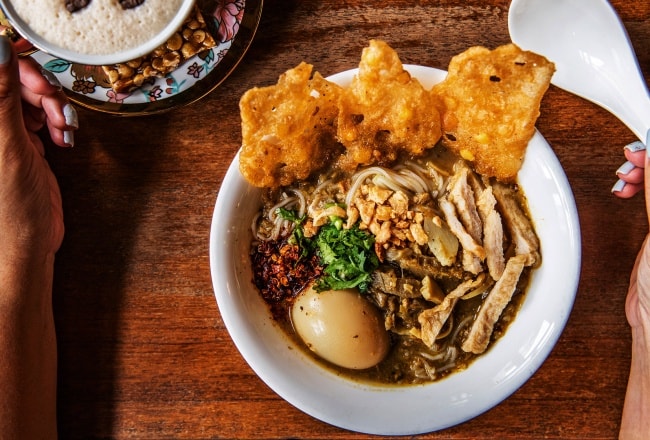
Business etiquette
Many offices in Myanmar are shoes-free areas. Shoes are worn from the street into public hallways and foyers, but then removed at the door of the office. Handshakes are common and standard, with both hands being used an acceptable practice.
If a businesswoman initiates a handshake, it is acceptable for a male to shake it, but a male would not initiate a handshake with a woman. If a handshake is not initiated by a woman, a male may instead make a small bow.
In an informal market setting haggling is acceptable, though not in shops.

Ana
Burmese society operates on ana, a characteristic or feeling that has no English equivalent. It is characterized by a hesitation, reluctance, or avoidance, to perform an action based on the fear that it will offend someone or cause someone to lose face or become embarrassed. Also, there is the concept of hpon, which translates to "power".
It is used as an explanation for the varying degrees of ethnic, socioeconomic, and gender differences between people in a society. Hpon refers to the cumulative result of past deeds, an idea that power or social position comes from merit earned in previous lives. This idea is used to justify the prevalent view that women are lesser than men, who are considered to have more hpon.
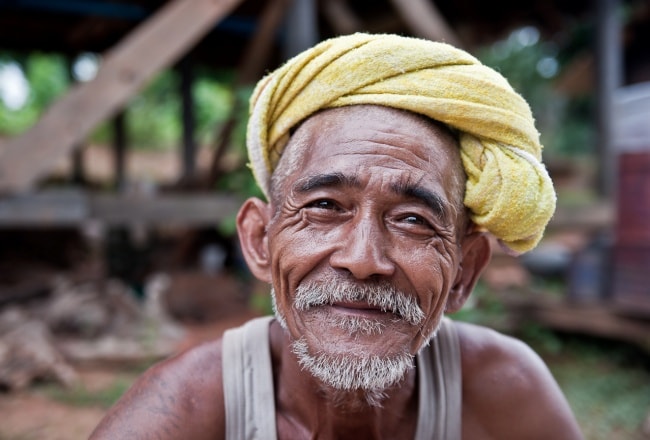
Smile and Be Friendly!
Having said all this, please do not let these dos and don’ts deter you from interacting with locals.
Being a foreigner means you are entitled to more lenience in interpreting these social rules. People will probably understand if you are not familiar with some of their cultural etiquette and make minor mistakes, without intending to offend them.
Furthermore, Myanmar people are generally very friendly and like to smile. If you are not sure whether it is appropriate to take pictures of them, approach them and ask. So, while keeping all the etiquette in mind, put on your best smile and enjoy your interactions with locals.
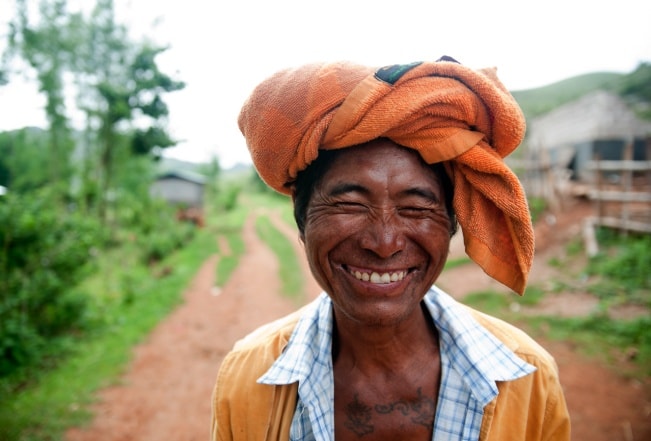
Frequently asked questions
Q. Do I need a visa to visit Myanmar?
The answer is “YES, you do”. But Myanmar has one of the easiest Visa policies in the world, thanks to the development of tourism.
Here is how you can apply for Myanmar Visa
Q. When is the best time to visit Myanmar?
The best time to visit Myanmar (Burma) is during the drier winter months of November to February. It's hot during the daytime, and lowland temperatures remain pleasant at night – although bring much warmer layers for the highlands and hill stations as they are chilly in the evenings.
Bagan and Mandalay are the hottest, driest regions – temperatures can peak at over 40°C – but rainfall is still light here in the wetter season, and with more bearable temperatures this is the best time to visit Burma to avoid the winter crowds.
Within this article, we will guide you from the seasonal to monthly weather guide; from things to do and best time for it to the highlighted festivals; and much more.
Check our full guide about Myanmar weather and best time to visit
Q. How to book cheap ticket to Myanmar?
This requires some simple efforts and skills.
Read our full guide on how to get the cheapest ticket possible to Myanmar
Q. Is Myanmar safe to travel?
For the vast majority of visitors, travel in Myanmar is safe and should pose no serious problems.
- Some areas of the country remain off limits due to ongoing civil war and/or landmines.
- In off-the-beaten-track places, where authorities are less used to seeing foreigners, local officials may ask you what you are up to. Saying you're a tourist normally satisfies them.
- If you have any tattoos of Buddha on your body, keep them covered up.
Here is our guide for Myanmar Safety & Precaution
Q. What to pack for Myanmar?
Check out the full packing list for Myanmar



